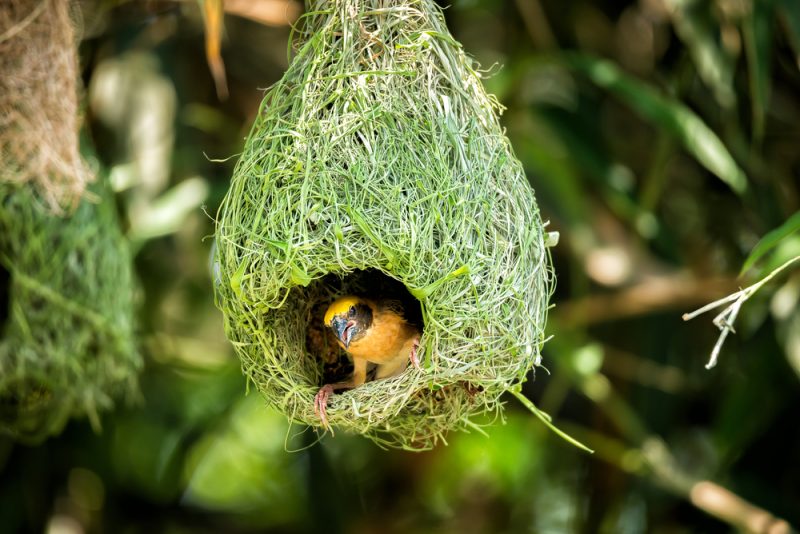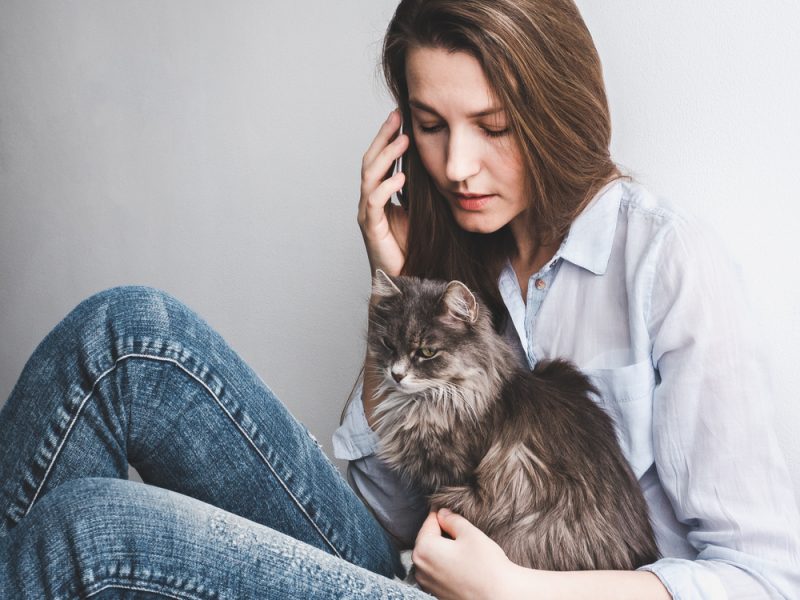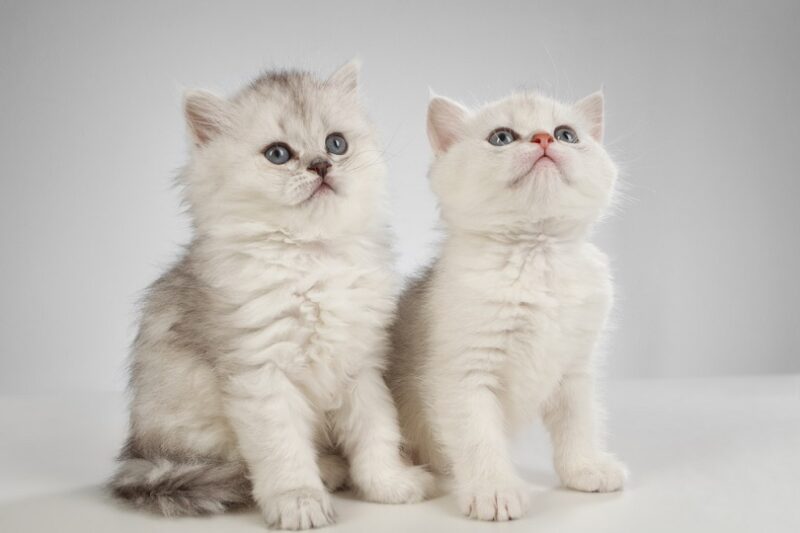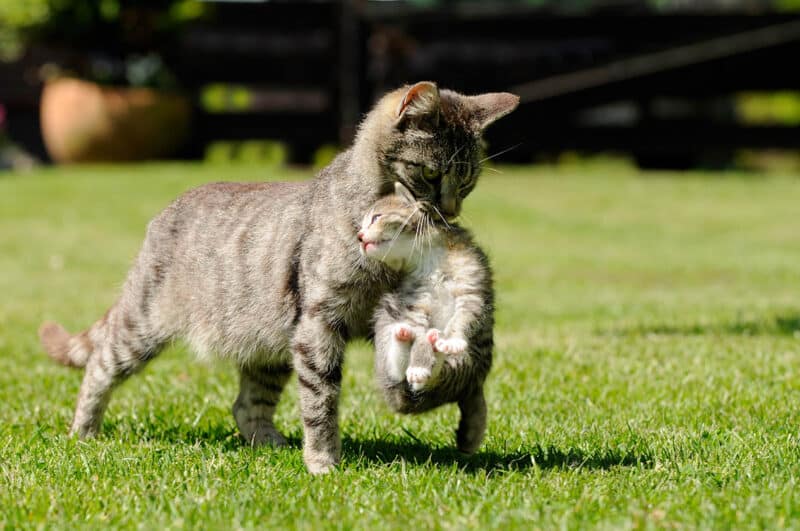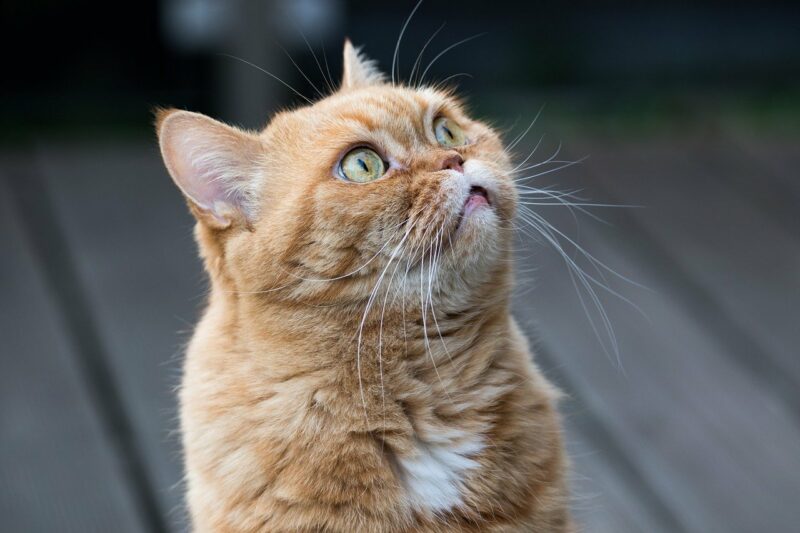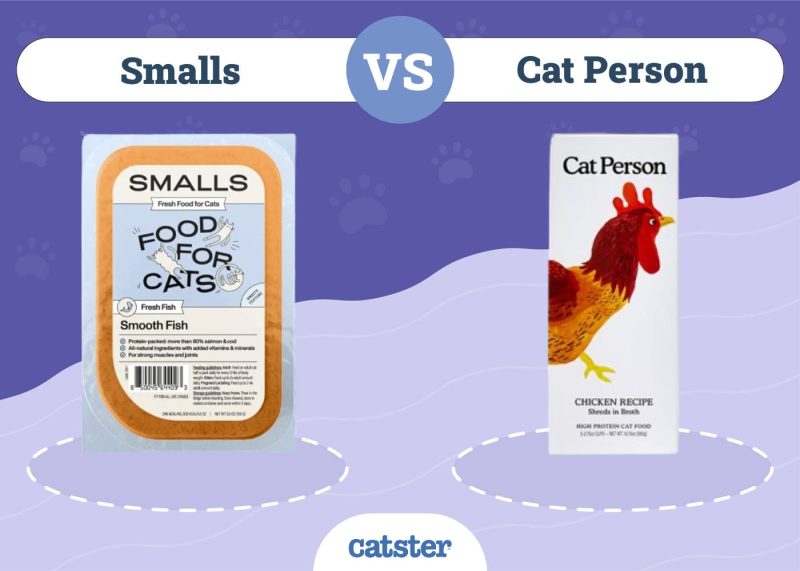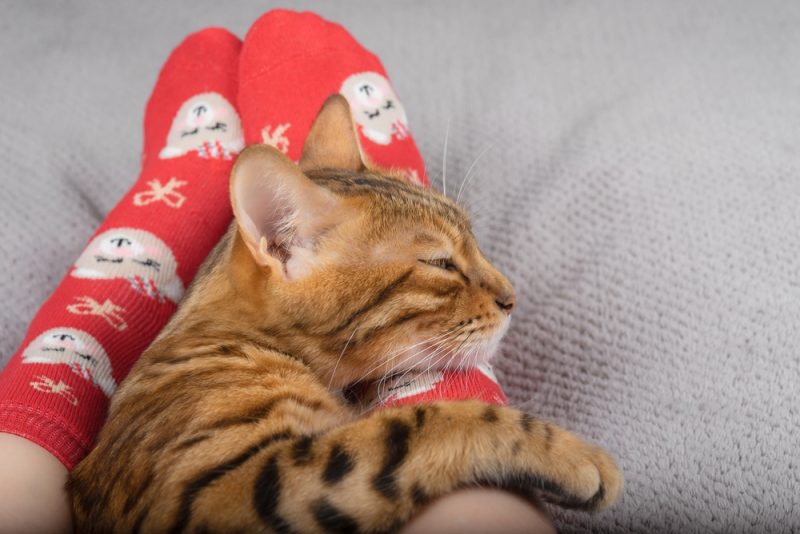Be they feral cats, loose strays, or wandering outdoor pets, cats kill millions of wild birds each year 1. While the felines aren’t to blame (they’re just acting on their natural instincts, after all), protecting birds from being hunted is still a good idea. Fortunately, there are things that you can do to protect birds’ habitats and control cat behavior that will keep nest attacks to a minimum.

The 12 Tips to Protect Bird Nests From Cats
Cats are born predators, which means it’s virtually impossible to train them not to hunt. Even the gentlest cats are more than willing to knock down a bird in flight. In most cases, it’s easier to stop the behavior by minimizing the interaction between cats and birds in the first place.
Please note that if you’re a bird watcher or bird enthusiast, the odds of birds making nests in locations frequented by cats is next to impossible. They will instinctively choose to nest elsewhere to safeguard themselves and their eggs.
1. Keep Pet Cats Indoors
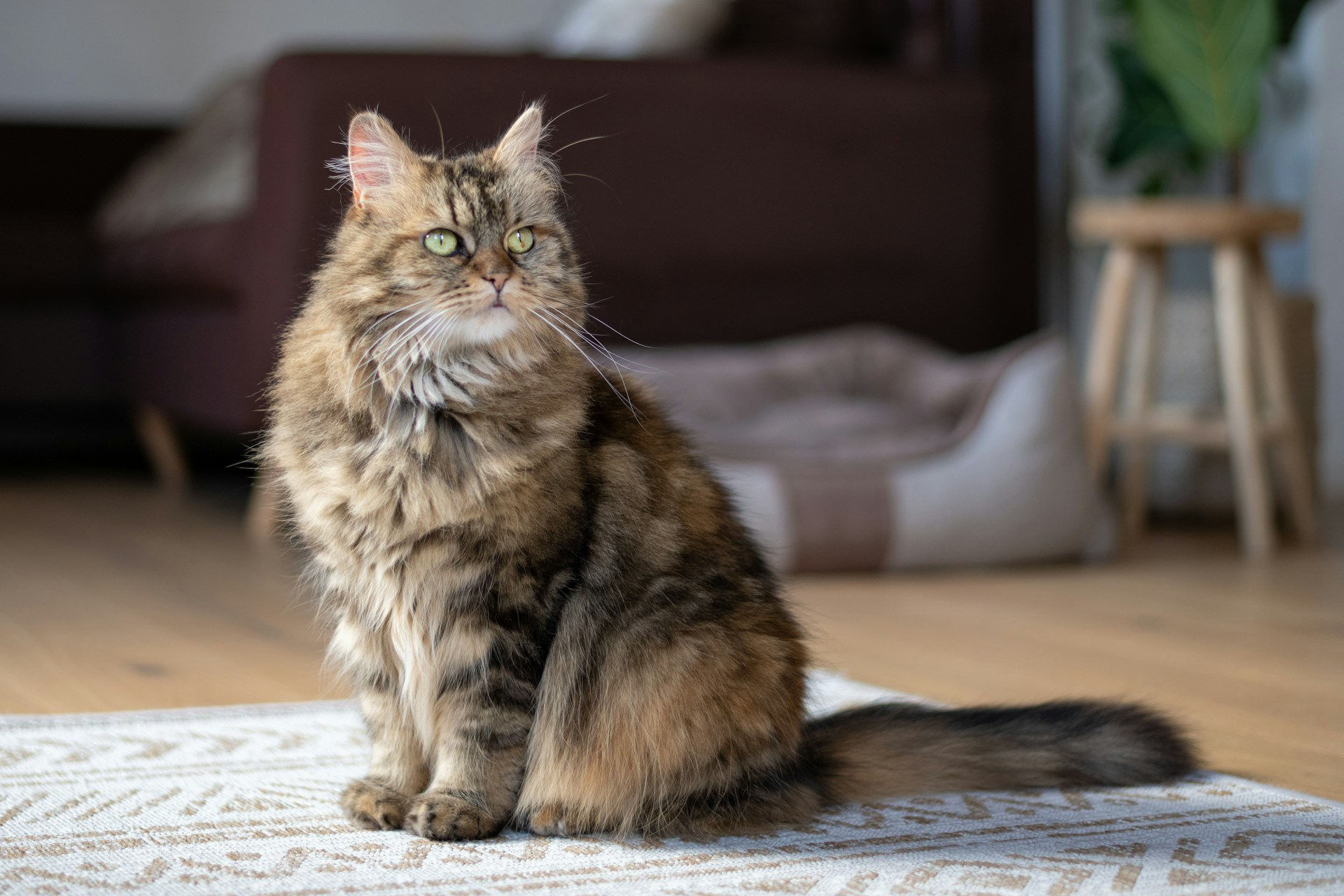
If your cat is killing birds and knocking down nests, the simplest way to prevent the behavior is to keep your cat indoors. If your cats must go outdoors, consider a cat enclosure (also known as a “catio”), or only let them out while supervised on a harness and leash. This will enable you to intervene if your cat threatens a bird’s nest.
- Prevents cat and bird interactions altogether
- Requires cats to be mentally stimulated inside
- Only works if it’s your own cat causing the problem; it’s not a solution for stray or feral cats
2. Do Not Inadvertently Reward Bird Captures
If your cat spends time outdoors and has caught a mouse in the past, you’ve likely rewarded the behavior. Many cats are kept for this reason: to keep homes and yards pest free. If your cat happens to catch a bird, it’s hard to tell your cat that you want them to selectively hunt only certain animals.
Positive reinforcement plays a large role in cat behavior. If you reward the catching of birds, even unintentionally, your cat is more likely to hunt birds in the future. While you shouldn’t punish your cat, don’t give them the idea that they’ve done a good thing.
- Helps discourage bird hunting
- Easy to implement
- Difficult to stop the behavior altogether, especially for outdoor “mousers”
3. Keep Claws Trimmed to Minimize Damage

Cats use their claws to climb bushes, fences, and trees, which is where they catch wild birds. Keeping your cat’s claws trimmed makes it more difficult for them to climb, and they can’t hurt the birds that they swipe at. Claws are among a cat’s most dangerous weapon, but they are easy to tame with regular maintenance.
- Minimizes damage to birds
- Makes it harder for cats to access birds
- Cats aren’t always cooperative with claw trimming
- No guarantee for success, as cats with trimmed claws can still hunt
4. Place Collars With Bells on Cats to Warn Birds of Imminent Danger
If a cat can’t sneak up on a bird to catch it, they aren’t likely to be successful. Birds have good instincts that keep them from being caught by predators. Adding a collar with a bell to your cat may alert wild birds to their presence. The birds will hide or take off when they know that your cat is coming. This is probably one of the easiest ways to let birds know that there’s imminent danger. However, it isn’t guaranteed to work, as many cats can learn how to silently ambush without “ringing the alarm”, and when they do ambush, the sound of the bell doesn’t make much of a difference in the outcome of the hunt (as they’ve already crept close enough prior to the ambush).
- Cost effective and easy
- May alert birds of danger
- Doesn’t involve any training
- Outdoor cats can easily lose collars
- Cats can still hunt successfully, even with a bell collar
5. Don’t Feed Stray or Feral Cats
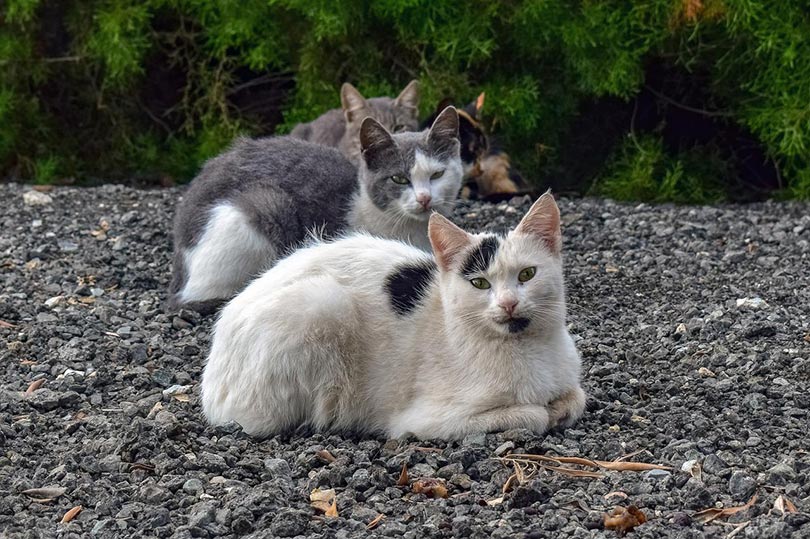
If the problem isn’t your own cat, but rather a stray or feral cat wandering into your yard and killing birds, make sure you’re not encouraging them to visit. Cats naturally frequent areas where they find food, and the more they’re fed, the more likely they’ll stick around.
If feral cats are a serious problem, contact your local animal shelter. Most have humane trapping methods to remove them.
- Contacting animal shelters helps control the feral cat population
- Sometimes it’s difficult to keep strays away
6. Spay and Castrate (Neuter) Your Cats
Spaying and castrating (neutering) your pets to keep the stray cat population down is important, but it can also reduce their hunting and roaming behavior. If you have a cat that’s outdoors, they are more likely to wander from home if they aren’t fixed. They are also more aggressive towards other cats (especially if they’re male).
- Prevents roaming and excessive hunting
- Reduces unwanted kittens
- The procedure can provide other health benefits
- The procedure can be complex in some cases and therefore may cost more in rare instances
7. Use Humane Traps to Capture and Relocate Strays
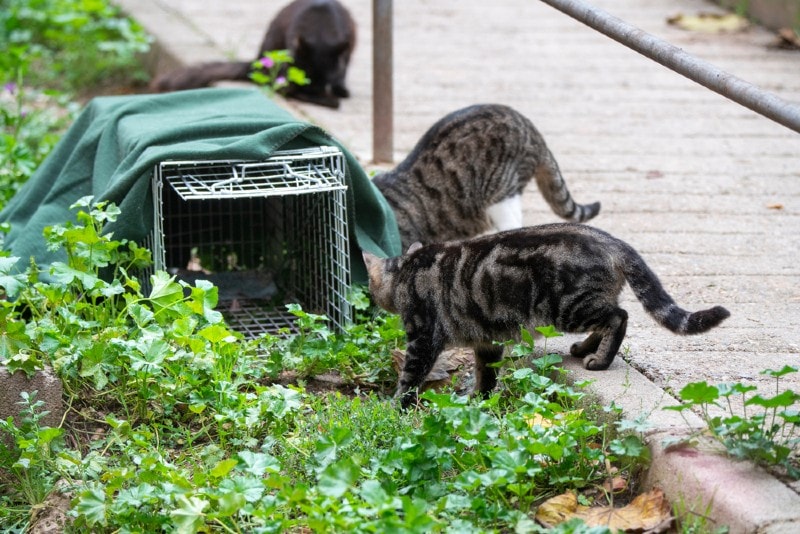
There are many options for humane, live traps to catch and relocate stray or feral cats. Catching these cats and taking them to your local animal shelter or cat rescue will, at a minimum, get them relocated. Many rescues have a catch, spay/neuter, and release program. They may release feral cats back into the wild, but they will be fixed to prevent contributing to overpopulation. They will also be relocated to an area away from your yard.
- May help curb the feral cat population
- Uses humane methods
- Removes stray cats from your yard
- Trapping cats requires patience and time
- Doesn’t solve the bird-killing problem in the short term
- May not be be legal or practical in some areas
8. Support Local Animal Shelters
While it may seem counterintuitive that supporting animal shelters will reduce the incidences of cats hunting birds in your yard, it can go a long way. Many shelters and rescue operations run on a shoestring budget and rely on donations to stay operational. Reducing the population of stray and feral cats relies on the ability of rescue organizations to trap and rehome them. By supporting your local shelter or rescue, you are helping control stray cat populations.
- Helps reduce stray cats hunting in your yard
- Helps reduce stray and feral cat populations
- May not prevent all cats from hunting birds in your yard
9. Cat Proof Your Yard
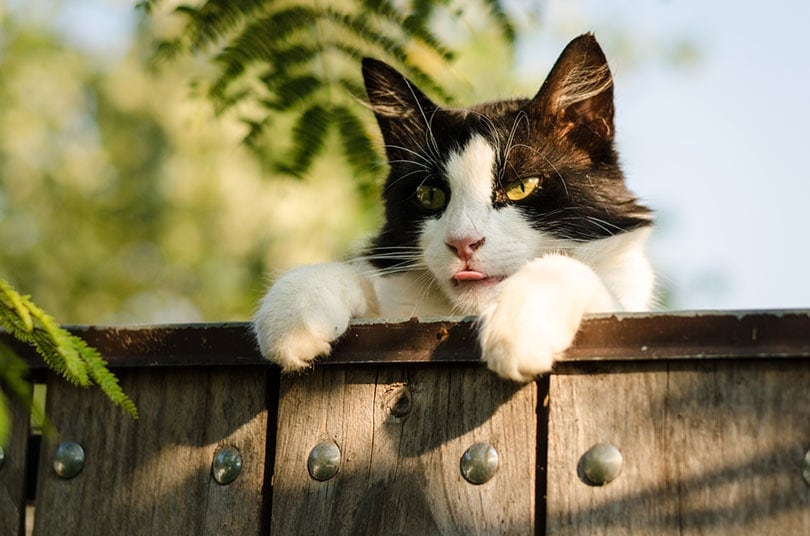
You can do certain things with your landscaping to deter cats from using it as a hunting ground. Cat-proof fencing that has holes too small for cats to climb through and that is at least 1.8 meters tall (approximately 6 feet) will help keep cats out. It’s also a good idea to keep trees and shrubs away from your fence line, as these can be used as a way for cats to get in. Take note that particularly athletic cats can scale such heights without much issues. A cat fence isn’t a guaranteed fix, but can keep most cats at bay most of the time.
- Aesthetically pleasing
- Naturally cat-proofs your yard
- Re-landscaping can be expensive and labor intensive
- May not successfully stop all cats from accessing your yard
10. Keep Bird Feeders Away from Trees and Shrubs
Trees and shrubs are prime hunting grounds for cats because they give them access to prey with the added element of surprise. Placing bird feeders in areas that are hard to reach and away from the cover of foliage gives birds a better opportunity to evade capture.
- Easy to do
- Not suitable for all yard setups
11. Install Fencing

Cat-proof fencing that is too high for cats to climb and free of holes to keep cats from sneaking in will naturally deter stray cats from hunting in your yard. Fences should be at least 1.8 meters tall and have no large gaps in the material.
- Provides a cat-proof barrier
- Can be expensive
- Labor intensive
- May not be suitable for your neighbors or neighborhood design
- Some cats may successfully scale the fence
12. Choose Safe Birdhouse Designs
Placing birdhouses in hard-to-reach places can keep them safe from cats. Make sure they are 3–4 meters above the ground, and consider installing them on metal or plastic poles that aren’t easily climbed by roaming felines.
It’s also recommended to design birdhouses with steeply sloped roofs to deter cats from sitting on them. Bird houses that close off automatically at night are recommended, as this prevents the inhabitants from attacks by nighttime predators (including cats).
- Helps keep birds safe
- Requires work and creativity
- Birds may not use the nest, resulting in wasted money

What Not to Do to Keep Bird Nests Safe
Keeping bird nests safe in your yard can be a frustrating endeavor. Cats are hard to keep out, so you may find that despite taking multiple steps to prevent them from hunting birds, they are still doing so. It’s important to always use humane methods to keep cats out of your yard and to remember that they’re not behaving badly; they are simply acting on their natural instincts.
Also, cats aren’t the only predators that hunt birds. Raccoons, snakes, and even larger birds commonly prey on backyard bird feeders and leave evidence that’s reminiscent of a cat attack. You may be dealing with more than one predator.
Ultimately, if you are enthusiastic about bird nests and bird watching, it’s best to not have cats around the area at all. Birds that notice predators in the area will naturally move away to other safer areas in which to build their nests and lay their eggs.

Final Thoughts
You can take certain steps to keep cats from preying on bird nests and bird feeders in your yard. If it’s your own cat doing the hunting, the best thing to do is minimize their access to birds in the first place by containing them. For stray and feral cats, you can adjust the setup of your yard and provide safe bird housing to discourage hunting. If stray cats are a severe problem, consider contacting your local animal shelter or rescue for assistance in trapping and relocating these cats.
Featured Image Credit: Platoo Studio, Shutterstock
